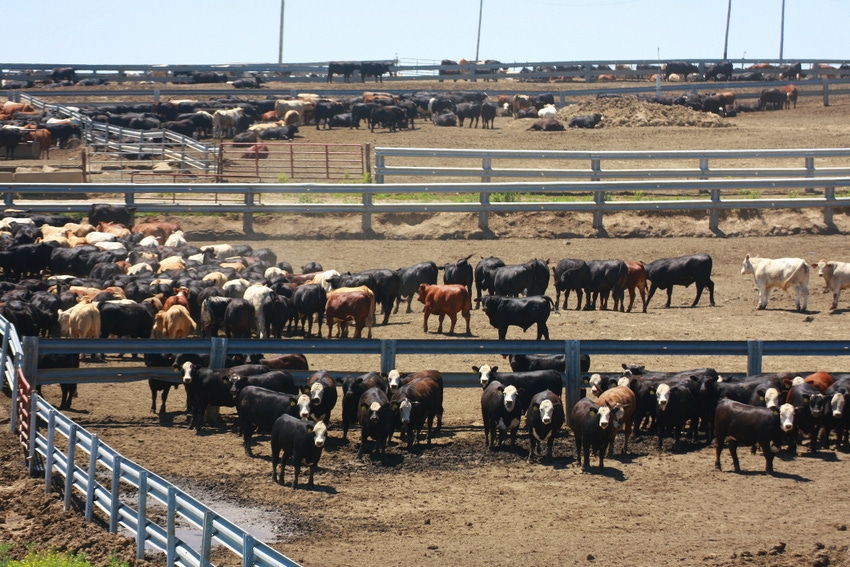Brazil and India projected to lead world in beef exports.

Global beef exports are expected to increase year over year in 2017, with growth in several major beef exporting countries supported by growing production, in most cases.
However, Derrell Peel, Oklahoma State University Extension livestock marketing specialist, said the situations vary among beef exporting countries, and market conditions will keep international markets dynamic for the foreseeable future.
Nonetheless, beef exports in 2017 from the top four exporting countries — Brazil, India, Australia and the U.S. — are projected to account for 73% of total exports from the top 10 beef exporting countries.
Brazil and India, with roughly equal beef export totals, are projected to lead the world in beef exports in 2017. Both countries are experiencing increasing production and growing international market demand and access, Peel said.
Brazil, which has a dominant position in European and Middle Eastern markets, is seeing increased access to China as well as the U.S.
“Late in 2016, the U.S. and Brazil announced an agreement that would allow Brazil to export fresh or frozen beef to the U.S., along with cooked product,” Peel noted, adding that Brazil's exports have also been boosted by the currency weakness of the real.
India has also seen growing production and international demand for its beef, much of which is carabeef (water buffalo). “Recent announcements indicate that India has an agreement with China for direct access to the Chinese market," he said. "Previous Indian beef shipments to China were transshipped through other countries such as Vietnam.”
According to Peel, Australia has slipped to the number-three beef exporting country as an extended herd liquidation that lasted through 2015 — which resulted in temporarily higher exports in 2014 and 2015 — is now resulting in reduced beef production and exports.
“Low cattle inventories, combined with herd rebuilding on better forage conditions, will suppress beef production and exports in 2017 and beyond," he said. "Australia has enjoyed expanded beef market access in China and most recently began shipping live cattle to China as well.”
Peel said the U.S. will maintain its rank as the number-four beef exporting country in 2017. After dropping in 2015, beef exports increased in 2016 as production increased and beef prices dropped from record levels.
Improved beef exports are projected for 2017 despite the headwinds of a continued strong dollar and considerable uncertainty surrounds the Trump Administration's unfolding trade policies.
“Renegotiating the North American Free Trade Agreement (NAFTA) exposes the beef industry to less favorable trade conditions, while the apparent demise of the Trans-Pacific Partnership (TPP) will maintain restricted U.S. access or less favorable tariffs in some markets, most notably Japan,” Peel said.
The U.S. currently does not have direct access to the rapidly growing Chinese beef market. Unofficial U.S. beef exports to China have occurred in recent years as transshipments through Hong Kong and Vietnam.
In the fall of 2016, China announced a willingness to move forward with an agreement for the U.S. to export beef to China. However, Peel said no agreement is in place at this time, and the current status of these discussions is unclear, given the political changes in the U.S. and the confrontational posture of the Trump Administration towards China.
The next tier of beef exporting countries are significantly smaller in export volume compared to the top four beef exporting countries, according to Peel. These include, in descending order based on projected 2017 exports: New Zealand, Canada, Paraguay and Uruguay. Combined beef exports from these four countries are smaller than the total of either Brazil or India. Each of these countries is expected to maintain or expand beef exports in 2017, Peel said.
Mexico, which has expanded beef exports sharply in recent years, ranks as the number-10 beef exporting country, just behind the European Union.
“Mexican beef exports are expected to continue growing in 2017 with significant expansion of Mexican feedlot and beef packing infrastructure in 2016,” Peel said, adding that the majority of Mexican beef exports currently are imported by the U.S.
Market recap
The February fed cattle futures market was mostly lower this week. Nearby contracts closed unchanged Monday at $120.25/cwt. and lower Thursday at $118.70/cwt.
January feeder cattle futures fell this week. Nearby contracts closed lower Monday at $132.775/cwt. and Thursday at $131.825/cwt.
For the beef cutouts this week, Choice and Select were higher at $193.00/cwt. and $189.74/cwt., respectively.
February lean hog futures were mixed. Nearby contracts closed lower Monday at $65.00/cwt., posted some gains Tuesday and Wednesday but closed lower again Thursday at $65.85/cwt.
Pork cutout values were mixed Thursday. The wholesale pork cutout increased to $82.81/cwt. Loins closed lower at $77.44/cwt. Hams were lower at $64.04/cwt., while bellies were sharply higher $158.50/cwt.
Hogs delivered to the western Corn Belt were higher this week, closing at $63.90/cwt. on Thursday.
The U.S. Department of Agriculture reported the Eastern Region whole broiler/fryer weighted average price at 86.98 cents/lb. on Jan. 20.
According to USDA, egg prices have been steady, with a steady to firm undertone. Offerings and supplies have been light to moderate. Demand has been light to fairly good, but mostly moderate.
Large eggs delivered to the Northeast were higher at 79-82 cents/doz. Prices in the Southeast and Midwest were also higher at 77-80 cents/doz. and 73-76 cents/doz., respectively. Large eggs delivered to California were higher at $1.55/doz.
For turkeys, USDA said the market was mostly steady, with light to moderate offerings. Demand has been light to good. Prices were lower at 95 cents to $1.05/lb. for both hens and toms.
About the Author(s)
You May Also Like

.png?width=300&auto=webp&quality=80&disable=upscale)

